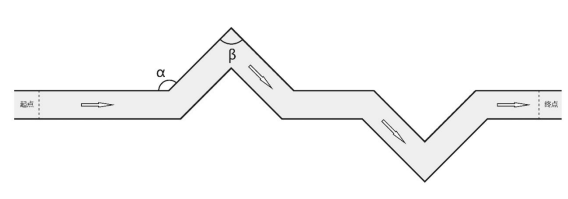Unmanned Car Race1.Scope of participation A.Participating group: The participants are graduate students and undergraduates, regardless of grade or major. Each team must include undergraduate students. B.Number of participants: 1 person/team (up to 3 people) C.Instructor: 1 person (available). 2. Competition theme The establishment of this competition can reproduce the application of unmanned smart cars in the actual field, especially in an unmanned environment, to realize positioning navigation, computer vision,a scene where multiple technologies such as radar, artificial intelligence, automatic control, and motor control merge. Through unmanned driving competitions, it is hoped that the competition will promote teaching, further deepen the integration of industry and university, broaden the teaching content of artificial intelligence and robotics-related majors in colleges and universities, and enhance the technological innovation and talent training capabilities of artificial intelligence and robotics in colleges and universities. 3.The competition process A.Registration: Contestants shall register according to the method and time specified by the organizer of the competition. Teams that have successfully registered are eligible to participate in the online competition. B.Video selection: Each participating team will complete the project completed by itself into a video from the beginning to the end, and send the video to the organizer of the competition in a prescribed way at the prescribed time. C.Online defense: After the video is uploaded successfully, according to the appointment schedule, the contestants need to explain and explain their projects and answer the teacher's questions. D.Online operation of the robot: In order to show that the video that the player has uploaded to the official is the original video, there is no need to optimize the video, and it needs to be shot in a single-shot way. During live defense, contestants need to demonstrate robot equipment to ensure the authenticity of their robots. 4. Competition description A.Participating robot 1) The size of the robot is within 150cm (length) × 190cm (width) × 210cm (height). 2) The competition platform must be a wheeled mobile robot, which should have lidar and IMU And other sensors, with independent decision-making capabilities independent of off-site control. 3) The robot must be powered by a battery, and its voltage range is 6V-15V. 4) The participating robot must be an autonomous robot, which determines its actions by itself, and must not be connected to any other equipment (including power supply) through cables. After the start of the competition, participants or other personnel are prohibited from manual remote control or the use of computer remote control robots. 5) On the basis of not affecting the normal competition, the robot can be personalized decoration. 6) The robot uses at most 2 motors, and the remaining parts can be replaced in the designated competition equipment. B.Site requirements Competition venue: The shape of the track is irregular. The track is prepared by the participants. The total length of the track is between 15m and the width of the track is between 1.5m. There are 6 bends on the track. The α angle of the track is in the range of 120°~160°, and the β angle is in the range of 90°~130°, as shown in Figure 1:
There must be 5 obstacles on the track. The obstacles must be placed in the center of the track. The position of the obstacles is arbitrarily chosen by the participants. The size of the obstacles is 50cm long * 50cm wide * 30cm high. C.Competition rules During the competition, the driverless smart car navigates autonomously according to the constructed map, starts from the starting point and navigates autonomously, avoiding obstacles on the way, reaching the end point, and automatically stopping after reaching the end point. If the robot leaves the field midway, it is deemed to have not completed the game. 3. The start time and end time of the competition must be shown in the complete video, and the complet 5. Competition requirements A.The robot starts timing from the starting point, and the whole process of passing the end point and completing the parking requires a meter to calculate the time. B.The video file of the game must be complete and original, and no editing is allowed in the middle of the video. C.In the video, the contestants, robots, stopwatch, and computer must always be in the video lens to ensure that the participating robots complete the game autonomously.
6.Scoring standards A.The total score is 100 points. B.The video score is 50 points, the defense score is 40 points, and the field robot operation score is 10 points. C.Video score considerations: the final action, the speed of completing the project, and the stability of the robot. D.Consideration of the defense score: the construction principle of the hardware structure, the autonomy of software programming, and the comprehensive case. E.On-site robot operation score consideration: Compare the speed of the robot with the speed in the video to verify the authenticity of the video. |
